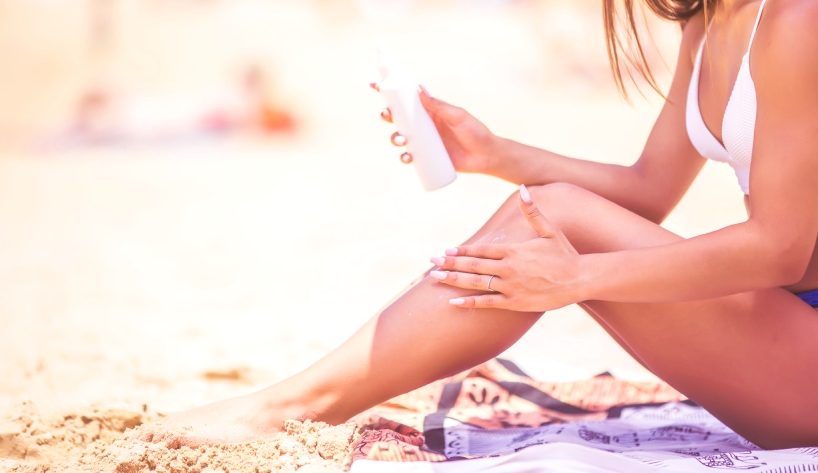Your skin is a remarkable organ that requires regular care and protection to maintain its health and radiance.Among the essential aspects of skincare, safeguarding your skin from the damaging effects of the sun is paramount.
In this article, we will explore some very effective strategies to care for your skin while emphasising the significance of sun protection.
1st: Start Your Protection with Daily Cleansing and Moisturizing
Establish a consistent skincare routine that includes regular gentle cleansing and moisturising. Cleanse your face twice daily to remove dirt, oil, and impurities that can accumulate throughout the day.
Follow with a suitable moisturiser that hydrates your skin and helps maintain its natural barrier function.
2nd: Sunscreen as a Daily Staple
Make sunscreen an integral part of your daily skincare regimen. Choose a broad-spectrum sunscreen with an SPF (Sun Protection Factor) of 30 or higher.
Apply it generously to all exposed areas of your skin, including your face, neck, arms, and any other uncovered areas. Reapply every two hours, or more frequently if you’re sweating or swimming.
3rd: Seek Shade During Peak Hours
When the sun is at its strongest, typically between 10 am and 4 pm, seek shade whenever possible. Limiting your sun exposure during these peak hours helps reduce the risk of sunburn and long-term damage to your skin.
If you must be outdoors, use additional sun protection measures, such as wearing a wide-brimmed hat, sunglasses, and protective clothing.
4th: Embrace Protective Clothing
Opt for clothing that provides physical protection from the sun. Choose lightweight, tightly woven fabrics that cover your arms, legs, and shoulders.
Wide-brimmed hats offer shade for your face, neck, and ears, while sunglasses with UV protection shield your eyes from harmful rays.
5th: Be Mindful of Reflective Surfaces
Remember that sunlight can bounce off reflective surfaces like water, sand, snow, or concrete, intensifying your exposure. Take extra precautions when you’re near these surfaces, such as applying sunscreen more frequently and wearing protective gear.
6th: Hydration: Drink Up
Proper hydration is vital for healthy skin. Drink plenty of water throughout the day to keep your skin hydrated from within. Staying well-hydrated enhances your skin’s elasticity, promotes a radiant complexion, and supports overall skin health.
7the: Healthy Lifestyle Habits
Certain lifestyle choices can impact your skin’s health. Avoid smoking, as it can accelerate ageing and damage collagen and elastin fibres.
Maintain a balanced diet rich in fruits, vegetables, whole grains, and lean proteins to provide your skin with essential nutrients. Get regular exercise, manage stress, and prioritise quality sleep for overall skin wellness.
8th: Regular Skin Examinations
Perform regular self-examinations of your skin to detect any changes or abnormalities. Be aware of any new moles, growths, or changes in existing moles, and consult a dermatologist promptly if you notice anything concerning.
Healthy Skin is Beautiful Skin
Nurturing your skin and prioritising sun protection are essential for maintaining its health and vitality.
By following a consistent skincare routine, embracing sun-protective measures, and adopting a healthy lifestyle, you can safeguard your skin from sun damage and promote its natural radiance.
Remember, prevention is key when it comes to sun protection, so take care of your skin today for a healthier tomorrow.
Learn How to Use UV Index Information for Your Own Safety
The UV Index is a scale that measures the intensity of ultraviolet (UV) radiation from the sun. The scale ranges from 0 to 11+ and is categorised into different levels of risk.
Usually, the UV index can be found in any more detailed weather forecast and can be very helpful in your skin care. Here is a general guideline for interpreting the UV Index:
- Low (0-2): The UV Index in this range is considered minimal or low risk.
- Protection against UV radiation is typically not required, but it’s still advisable to take basic precautions, especially if you have sensitive skin;
- Moderate (3-5): The UV Index in this range is considered moderate risk.
- It indicates that there is a moderate amount of UV radiation present.
- It is recommended to take precautions, such as wearing protective clothing, using sunscreen, and seeking shade during peak hours.
- High (6-7): The UV Index in this range is considered high risk.
- It suggests that there is a significant amount of UV radiation. It is important to take precautions by using sunscreen with a high SPF, wearing protective clothing, sunglasses, and seeking shade during the peak sun hours.
- Very High (8-10): The UV Index in this range is considered very high risk. It indicates that there is a very high amount of UV radiation.
Extra precautions are necessary, including using broad-spectrum sunscreen with a high SPF, wearing protective clothing, a wide-brimmed hat, sunglasses, and seeking shade during peak hours.
- Extreme (11+): The UV Index in this range is considered extremely high risk. It signifies an extremely high level of UV radiation, which can be particularly dangerous.
It is crucial to take extensive precautions, including staying indoors during peak sun hours, using broad-spectrum sunscreen with a high SPF, wearing protective clothing, and sunglasses.
It’s always advisable to check the UV Index forecast for your area to determine the specific risk level and take appropriate precautions to protect your skin from the harmful effects of UV radiation.

